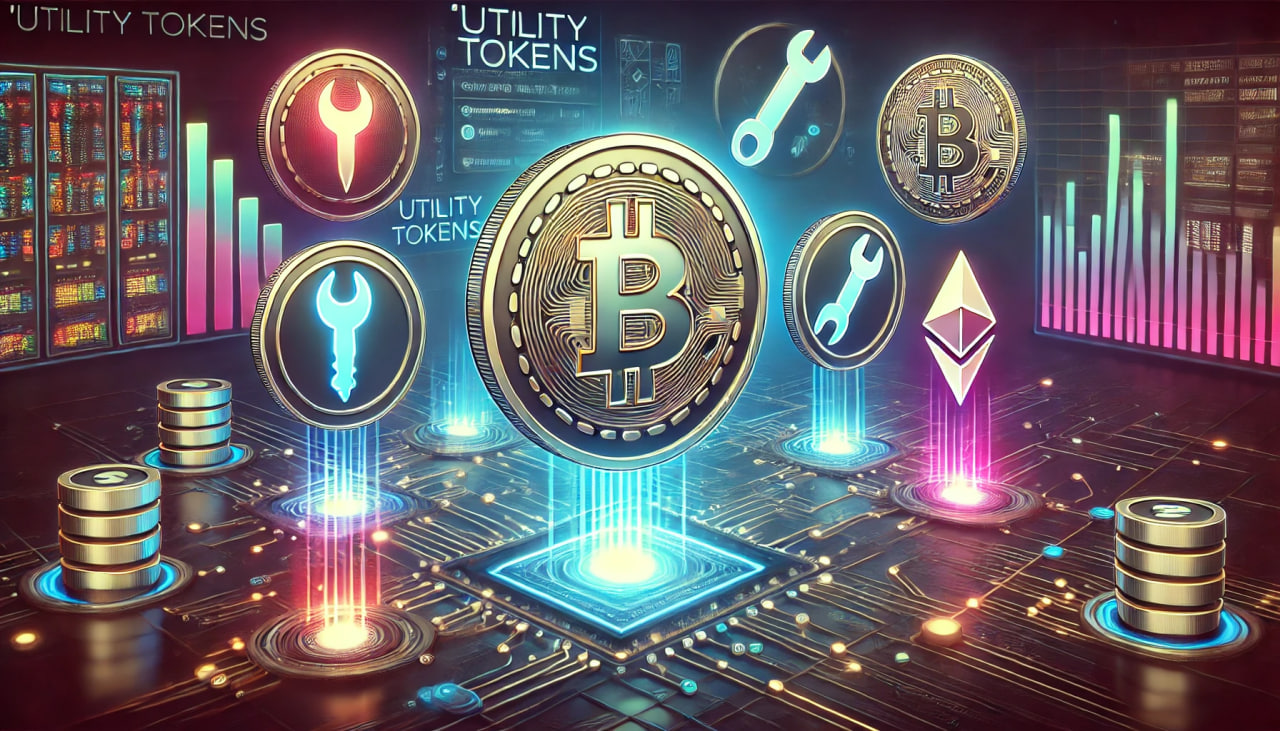With the development of digital technologies and cryptocurrencies, various types of tokens are gaining increasing popularity. In this rapidly changing world of cryptocurrencies, different types of digital assets play a significant role. One of the key types among them is the utility token. These tokens, unlike payment tokens, have unique functionality and specialized applications within the ecosystems for which they were created.
These types of tokens provide users with access to specific products or services within particular platforms. Utility tokens enable the execution of specific actions, payment for services, access to premium content, or activation of special features.

Concept of Utility Tokens
Utility tokens in cryptocurrency represent tokens created on the blockchain that have specific functionality and a defined scope of application. These tokens are native to the platform on which they are used and provide access to various services and features within the ecosystem. Unlike financial instruments, utility tokens are not subject to the same rules and restrictions as securities.
Utility tokens are often issued in the process of ICO, IDO, or IEO, where investors can acquire them in exchange for cryptocurrency or fiat currency. These tokens serve as an incentive for platform users and are sometimes necessary for the full functioning of the network. For example, to participate in certain activities or gain access to specific platform features, users may be required to hold a certain number of tokens. Utility tokens are also used to reward users for completing tasks or providing services on the platform.
The use of utility tokens is limited to the specific ecosystem for which they are intended. For instance, one could imagine a scenario where Uber creates its own utility token for ride payments. The main difference between utility tokens and other tokens is that they are not intended for use as investments.
The United States Securities and Exchange Commission (SEC) continuously monitors new utility and security tokens (tokenized securities or cryptocurrencies officially recognized as securities). To determine whether a specific token is classified as a security token or a utility token, the regulator applies the Howey Test.
Utility tokens are not subject to the same rules and requirements as security tokens because they are not considered investment contracts. One of the most well-known examples is Filecoin, used for the decentralized data storage platform of the same name.
| Criterion | Utility Tokens | Security Tokens |
|---|---|---|
| Regulation | Not considered securities | Considered securities |
| Primary Use | Access to platform services and features | Investment and asset ownership |
| Examples | Filecoin, Ethereum | tZero, Polymath |
| Issuance Procedure | ICO, IDO, IEO | STO (Security Token Offering) |
| Regulating Authority | Lenient requirements | Strict control by the SEC |
Thus, utility tokens play an important role in blockchain platform ecosystems, providing users with access to services and encouraging active participation. It is crucial to understand the differences between various types of tokens and their purposes to effectively utilize their potential in modern digital ecosystems.
Examples of Utility Token Usage
Utility tokens are applied in various digital ecosystems, offering a wide range of possibilities for users and developers. Their use ensures access to unique functions, stimulates network activity, and simplifies interactions within platforms.

Let's look at some striking examples demonstrating the diversity and functionality of utility tokens in various projects.
Golem (GLM)
Golem represents a decentralized supercomputer that provides users with the opportunity to rent out their computing power to other network participants. The Golem token (GLM) is used to pay for services and resources offered on the platform, ensuring an economic model for network operation.
Rocket Pool (RPL)
Rocket Pool is a protocol designed for decentralized liquid staking of ETH. The Rocket Pool utility token (RPL) performs several functions: it incentivizes users, provides insurance, and serves as a governance token. Any company or individual can join the Rocket Pool node network by staking a minimum of 16 ETH. Each node operator is required to provide the necessary amount of RPL tokens as collateral for security, allowing them to earn rewards for staking in the future.
Nexo (NEXO)
Nexo is a European instant credit platform using the NEXO utility token. The platform allows borrowing fiat currencies and stablecoins against cryptocurrency collateral. Users hold NEXO tokens in their portfolios to participate in the loyalty program, gaining additional benefits and rewards.
Basic Attention Token (BAT)
Basic Attention Token (BAT) is a token created on the Ethereum blockchain, designed for monetizing user attention in the Brave browser. Users receive BAT tokens as rewards for viewing advertisements in this browser, which stimulates their activity and interaction with content.
Augur (REP)
Augur represents a decentralized prediction market platform that allows users to create forecasts and bet on the outcomes of real-world events. The Augur token (REP) is used to reward market makers who accurately predict event outcomes, ensuring reliability and activity on the platform.
Advantages and Disadvantages
Utility tokens play a crucial role in modern digital ecosystems, providing users with access to various services and functions. However, like any other financial instrument, they have their pros and cons. Let's take a closer look at the advantages and disadvantages of utility tokens.
Advantages
Utility tokens have several significant advantages that make them attractive to users and developers.
- Participation Incentives: Utility tokens can encourage users to actively participate in the ecosystem by providing them with rewards for their activity. This creates motivation for users to stay active and contribute to the platform's development.
- Transaction Simplification: In-platform transactions using utility tokens can be faster and cheaper compared to traditional payment methods. This allows for significant cost savings and accelerates the interaction process within the ecosystem.
- Support for the Ecosystem: Issuing utility tokens can promote the development and support of a project by providing developers with funding. This helps attract new investments and resources necessary for the growth and improvement of the platform.
Disadvantages
Despite their advantages, utility tokens also have several disadvantages that may limit their use.
- Limited Applicability: Outside of their ecosystem, utility tokens are generally useless. Their value and functionality are restricted to a specific platform, which can reduce their appeal for broader use.
- Regulation: In some countries, the legal status of utility tokens remains uncertain, which can create risks for investors and users. Regulatory uncertainty can complicate the integration of tokens into financial systems and lead to legal issues.
- Volatility: Like other cryptocurrencies, utility tokens can be subject to significant price fluctuations. Volatility can make them less stable and reliable for storing value, which poses a risk for users.
Utility tokens represent an important tool in the modern digital world, offering significant advantages for participation incentives, transaction simplification, and ecosystem support.
Understanding all aspects of utility tokens, their advantages and disadvantages, allows for more effective use of their potential and avoidance of possible issues. It is crucial to consider these factors when developing and using tokens to maximize their capabilities and minimize risks.
Thus, utility tokens continue to be an essential element of modern digital ecosystems, promoting innovation and expanding the horizons of blockchain technology usage. Their further development and integration will depend on the ability to overcome existing challenges and adapt to changing market conditions and regulatory environments.



